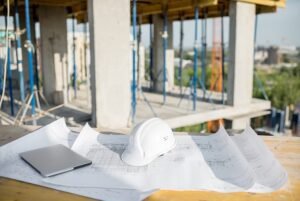A commercial flooring estimator is responsible for much more than simply measuring and calculating the flooring quantities required for a job. The size of the organization and the number of roles each employee handles eventually determine the estimator’s tasks. When a company decides to quote a project based on a bid solicitation, your estimator’s task begins immediately.
Pre-bid evaluations of bidding materials such as the project manual, specs, and drawings are a simple approach for your sales team to determine whether a project will be priced. Create a checklist of what you want to review. This is just a quick summary.
Flooring Estimate Checklist
The project handbook includes construction timelines, contractual terms and conditions, insurance needs, alternates, submittal information, change order information, billing information, close-out information, and warranty information. This information is given to the price team who helps with the cost of the construction project.
Project Specifications: Division 9 criteria apply to commercial flooring. Other divisions, such as Divisions 1 and 3, can impact our scope and responsibilities.
Project Drawings: More often than not, the architectural drawings/finish drawings are only some of the designs that require flooring information to be given. Plumbing-reflected ceiling or demolition drawings frequently contain annotations that influence our estimate or scope.
Review: All bulletins and requests for information logs must be assessed as part of the estimation process.
Specified finishes: Product, installation, and maintenance instructions should be reviewed. When unfamiliar with products, do call and discuss them with vendors so that the new information is given to whoever produces the quote. When we discover the incorrect product stated in the wrong place, we raise a question.
As A Flooring Estimator, What Do I Fear?
After 15 years in the profession, 12 of which were spent estimating, it still excites me how many requests for information I receive. I have yet to begin the actual estimate. Many architects and designers have succumbed to the copy/paste syndrome, failing to check the manuals and specifications submitted to bidders. The only way to protect your company’s interests is to query these pre-packaged requirements throughout the bidding process by requesting further information. Questioning manuals, contract obligations, and specifications should only be done at the post-bid meeting or contract award if it is usually too late.
At this phase, an flooring estimator can begin the actual work, which will quantify and qualify material quantities for the bid package/proposal. Many flooring estimators use flooring estimating software.
Other flooring estimators will print or purchase designs and write the estimate by hand. I do an estimate by hand monthly to keep my skills strong. Some estimates must be field-measured and estimated by hand because no drawings are available. Our methods for arriving at estimations may differ, but we are all working toward the same goal.
How Will These Tips Help A Flooring Estimator?
Be cautious! There is still work before coloring and calculating your rooms. Be careful you do the following:
Check the print’s scale: I have seen too many drawings that are small, and the scale requires updating. Double-check the measurements listed on the drawings in both ways on a plan, as the drawing may only be downsized in one direction.
Check print match lines: When architects divide an overall composite plan into multiple pages with match lines, some rooms may be replicated on two pages, so floor estimate them once. Sometimes, chunks are cut away. A solid rule of thumb is constantly comparing the blown-up and composite plans.
Read notes: Make sure to read all the notes, not just on the page you’re estimating, but on all pages. Small features, such as a separate wall base for accent walls, may appear but not on the completion drawing or timetable.
If a set of prints includes a room finish plan and a room finish schedule, ensure they list the same materials in the same spot. This is the most common request I make for information from a bidding general contractor, architect, or end user.
Double Check All Floor Estimates

After examining and double-checking our work, we now have a preliminary set of information requirements, so let the quantification phase of an estimate begin. This essay cannot educate everyone on how to make an accurate floor estimate. However, I will emphasize double-checking your work. The first and most critical step in any endeavor is to gather and prepare information. Furthermore, remember the small elements, such as transition pieces from one flooring to another, when creating your estimate. Once your floor estimate is complete, write up any additional information requests and submit them all simultaneously. Adjustments must be accounted for before the final bid date.
Each contractor uses a different structure to submit the floor estimate to the sales team for pricing. Estimators may be the most knowledgeable about a project after it has been awarded. The moment you receive the bid it is wise to re-check and re-assess the estimates. You must re-estimate and account for any design modifications throughout the project.
How Does Floor Estimate Affect The Project?
The degree of the loss by a lousy floor estimate is mostly by the job site’s size and the hardwood flooring requirements. However, in a competitive market like ours, proper bidding is crucial regardless of the work size. Given these competitive pressures, it is doubtful that you could recoup any meaningful loss by spreading the cost across future jobs. Let’s face it: keeping a decent bottom line is difficult enough, and the marketplace will not tolerate excessive fluff in a bid.
How Do You Estimate Flooring Cost?
Estimate flooring cost is an essential that every flooring estimator embarks upon. You will require Flooring estimating software and complete blueprints to estimate flooring cost precisely and correctly. The flooring estimating software is the future as it can estimate flooring costs perfectly. The cost of buying this software alone can be mind-numbing. That is why it is prudent for you to always outsource these services. A floor estimating company already has access to these tools and helps a lot when estimating flooring costs.
My Final Take
The actual take-off or pre-job site inspection is where the effort to reduce erroneously floor estimates begins. Make sure you have enough time. The waste element inherent in hardwood construction is another significant factor to consider when estimating. Please include this cost in the bid to avoid the dealer/contractor bearing an expense the builder should bear.






